A well-known, dreaded compliation. The engorged spinal veins, especially those with very limited outflow, can and do sometimes thrombose after spinal dural fistula treatment. Proabably more likely to do so if embolic material such as glue or EvOH spills over from “foot of the vein” (radicular or bridging) into the spinal veins proper. Many operators place patients after dural fistula rx on anticoagulation for some variable period of time (a few weeks usually) to prevent such a thing from happening. The most critical time is the first 24 hours.
Clinically, thrombosis presents with severe cord neurologic deterioration, usually within 24 hours. Treatment is with aggressive anticoagulation.
Pre-treatment MRI
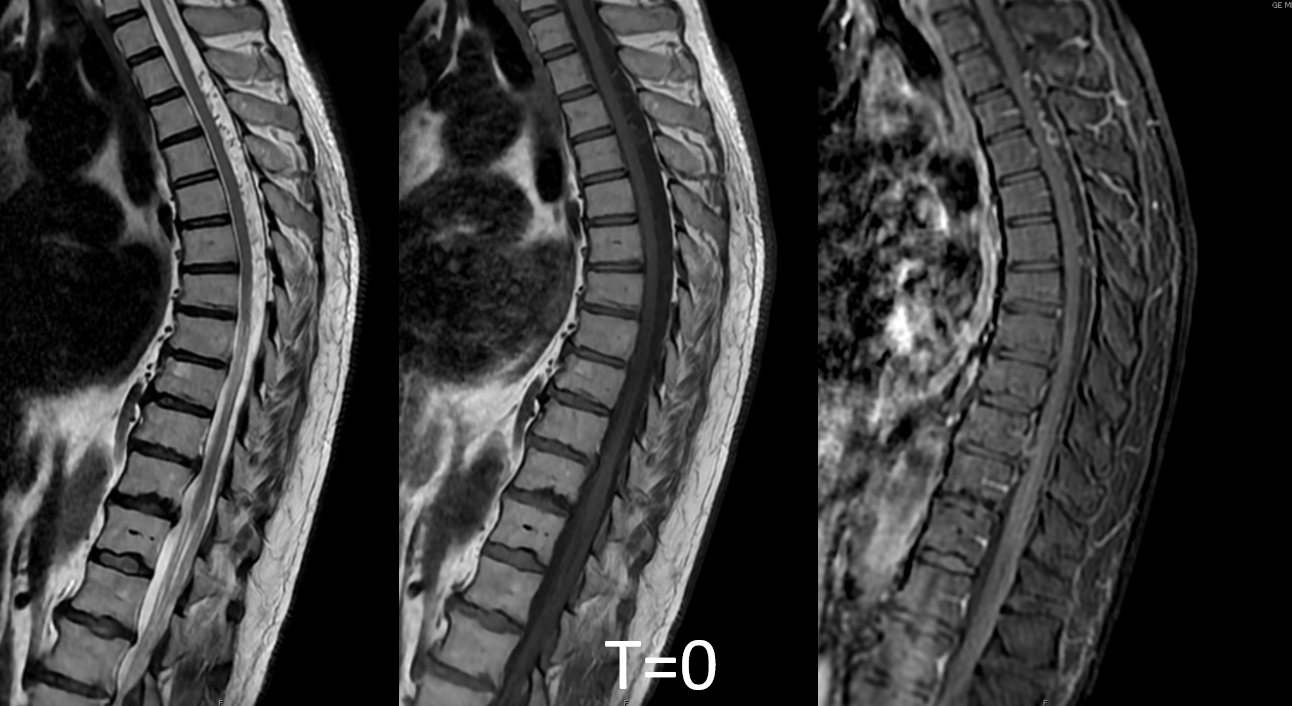
Angio — outside study. T5 fistula
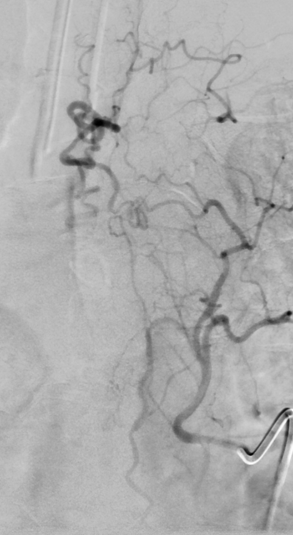
Post-procedure deterioration — what is the imaging clue here?
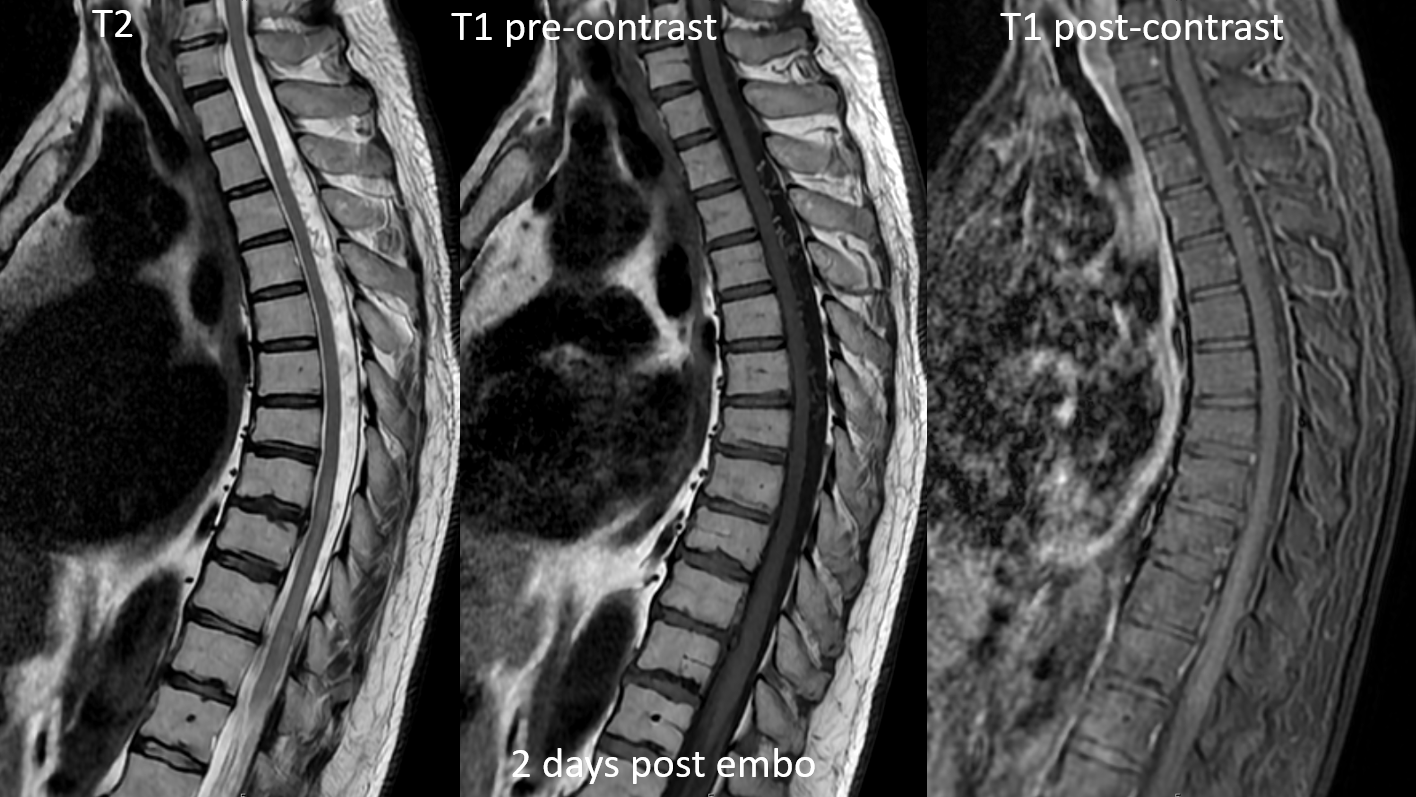
Treated with anticoagulation with gradual recovery. Ultimately better than before embo.
Follow up MRI — what are clues?
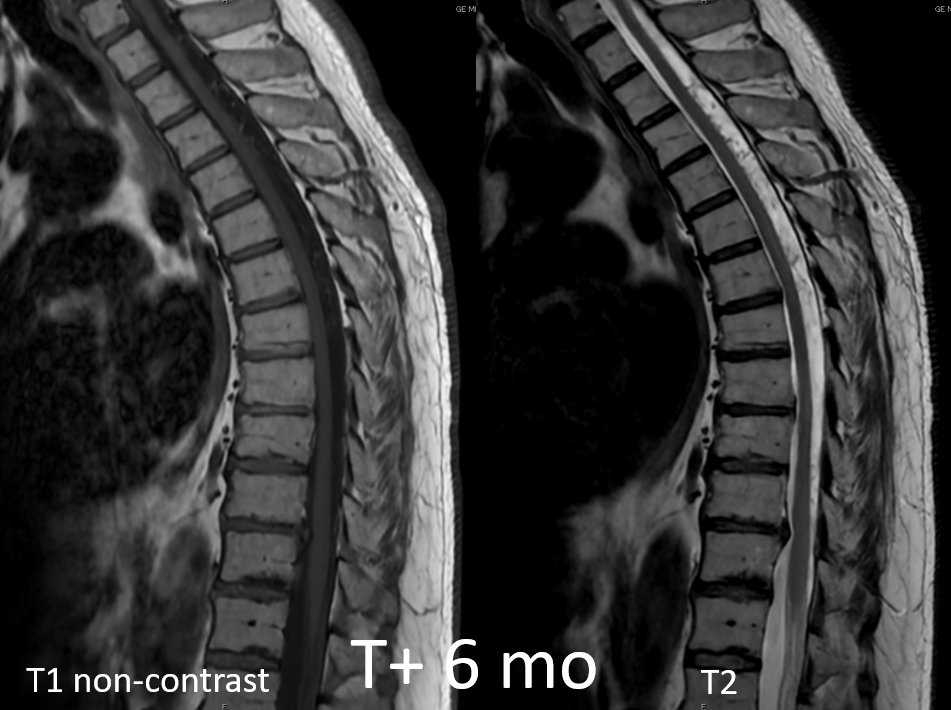
Delayed follow up mRI. What are clues?
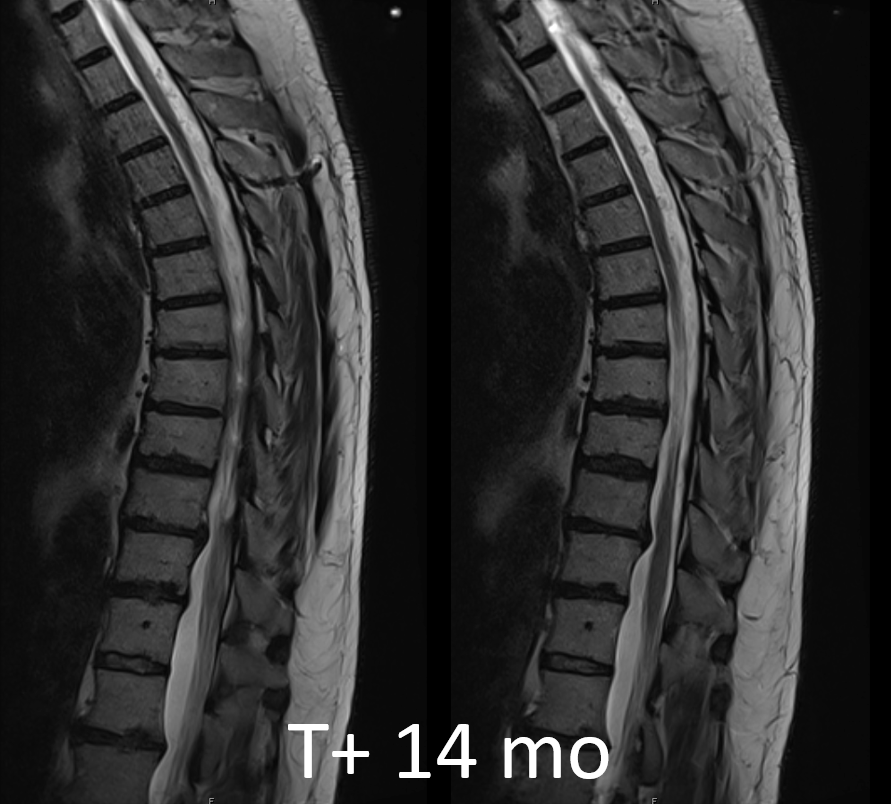
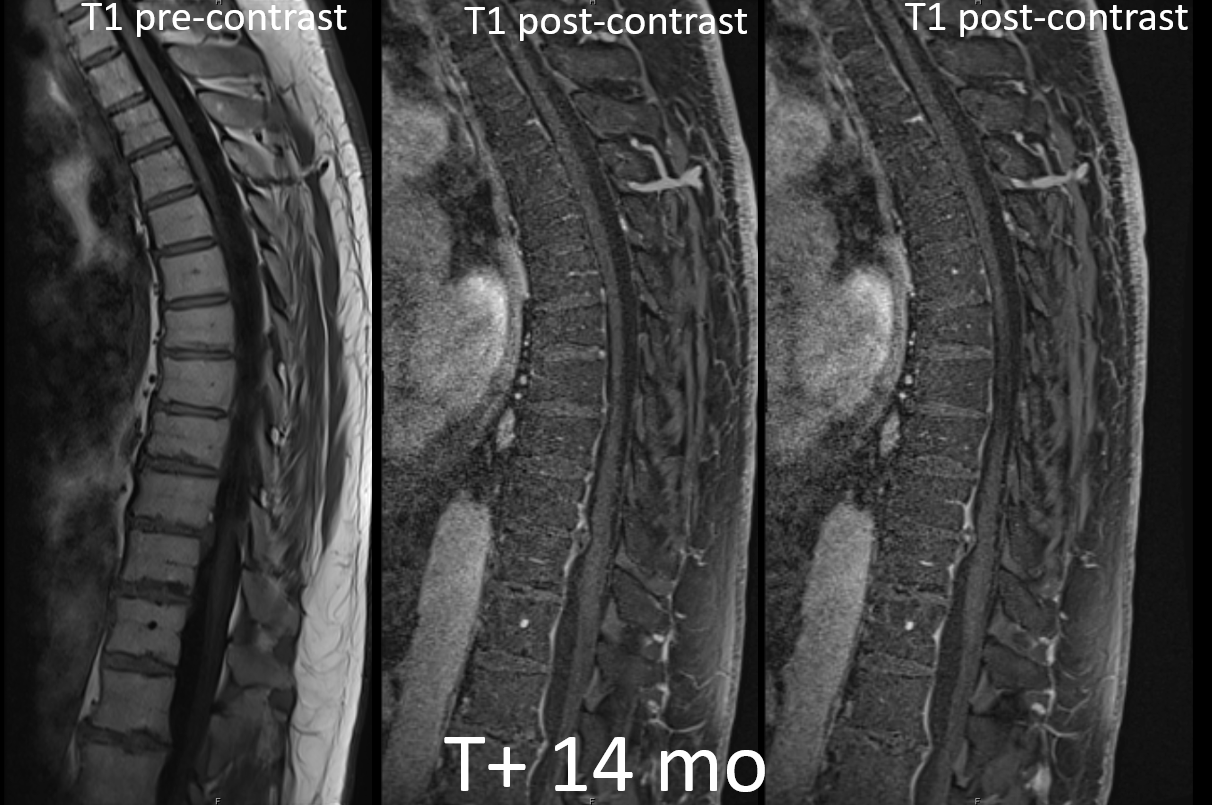
Detail post-contrast MRI. Additional clues?
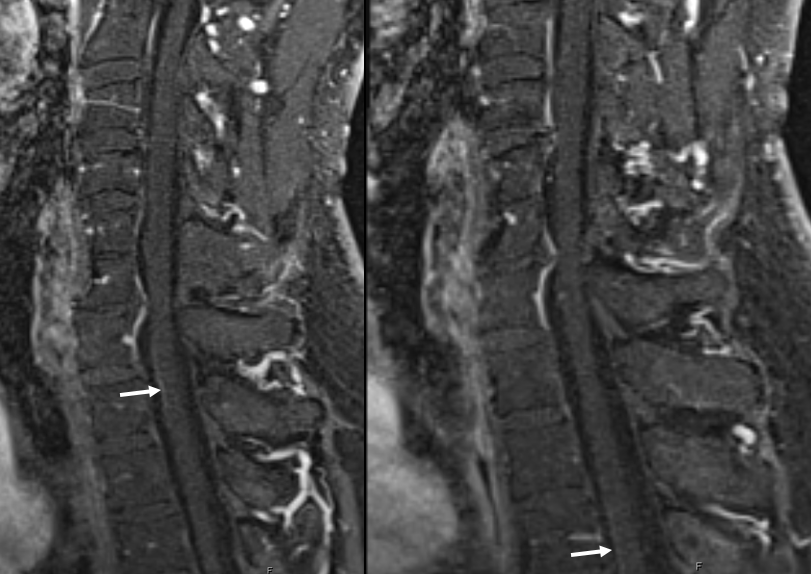
Angiogram
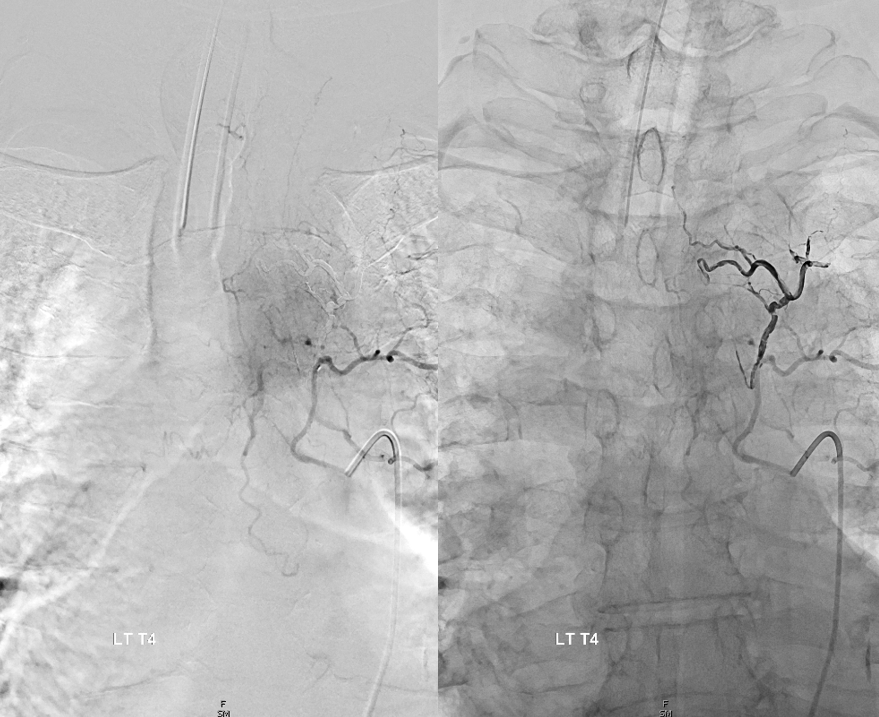
See Spinal Arterial Anatomy and Spinal Dural Fistula pages
